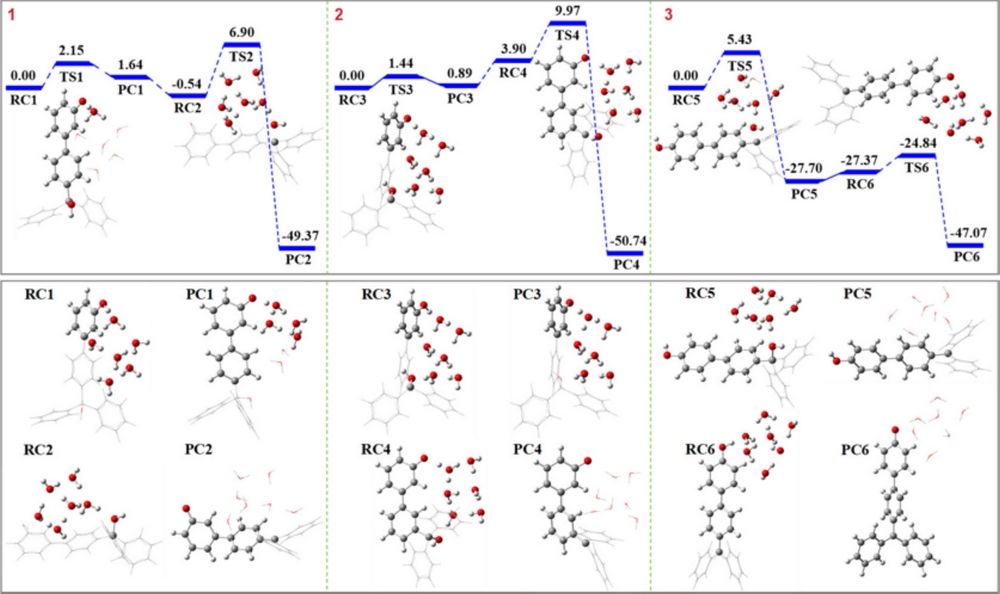
Yan Guo, Lingfeng Ge, David Lee Phillips, Jiani Ma*, Yu Fang. J. Phys. Chem. Lett. 2024, DOI: 10.1021/acs.jpclett.4c01875

Basarić et al. designed a series of phenylphenol derivatives substituted with the sterically congested adamantyl moiety or two phenyl groups as QM precursors, which undergo solvent-assisted photodehydration reactions to produce their corresponding QMs. The bulkiness of the substituents sterically hindered the attack of nucleophiles to the methylene position of the QMs, making them longer-lived and more selective in reactions with nucleophiles, which renders such QMs potentially useful for applications in biological systems for the alkylation of DNA. A series of sterically congested QMs exhibit photoinduced antiproliferative activity against some human cancer cell lines. To elucidate the structure-reactivity relationship and details of mechanisms of the photogeneration of sterically congested QMs, we chose phenylphenols derivatives 1-3 as QM precursors and investigated their photodehydration processes in aqueous solutions using ultrafast spectroscopy and theoretical computations.

Figure 1. Investigated Sterically Congested QM Precursors 1-3 and Their Corresponding Methyl Ethers 1Me-3Me Which Cannot Produce QMs.

Figure 2. PES profiles of phenylphenol derivatives 1-3 with six H2O, mapped employing (TD) B3LYP(D3BJ)/6-311G**/SMD (H2O) calculations (the energy unit is kcal mol-1).

Figure 3. Proposed Photoinduced QM Generation Mechanism of 1 in CH3CN-H2O.

Figure 4. Proposed Photoinduced QM Mechanism for Generation of 3 in CH3CN-H2O.
We found that meta-derivatives 1 and 2 undergo water-mediated excited-state proton transfer (ESPT) from the phenol OH, followed by the expulsion of the OH− to form QMs. By comparison, para-derivative 3 proceeds via water-mediated ESPT from H2O to benzyl alcohol coupled with dehydration as the first step, delivering a cation intermediate, which further deprotonates to yield QM.
Such results would help chemists understand more about the meta effects in photochemistry and about ESPT and would help synthetic chemists design sterically congested QM precursors with extraordinary reactivities and expand applications of QMs in biological and medical systems.
First Author: Guo Yan, doctoral candidate, Shaanxi Normal University
Correspondence Author: Prof. Ma Jiani, Shaanxi Normal University
Full Text Link: https://pubs.acs.org/doi/10.1021/acs.jpclett.4c01875?ref=PDF